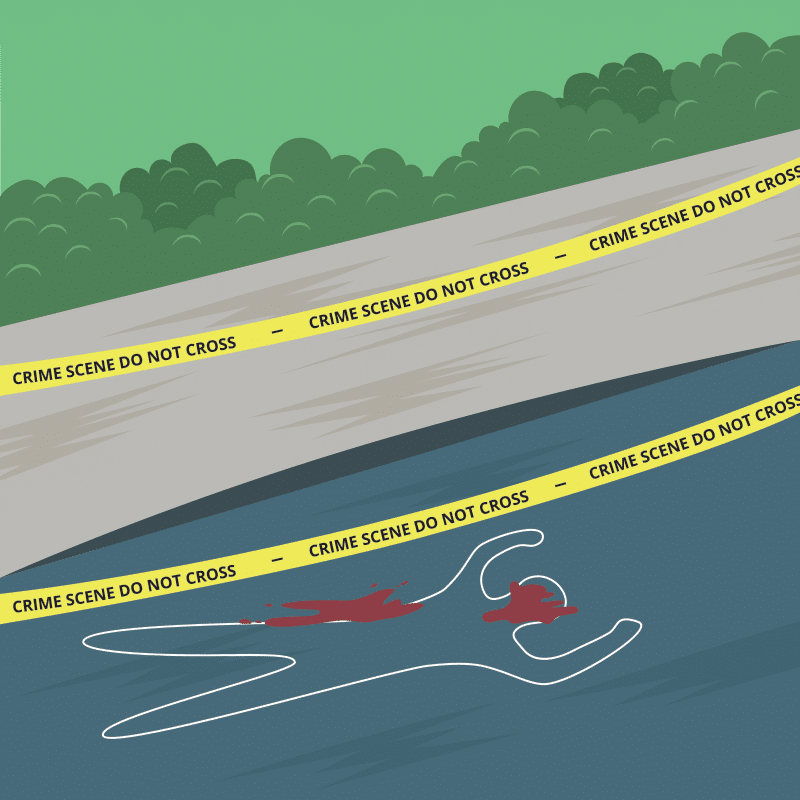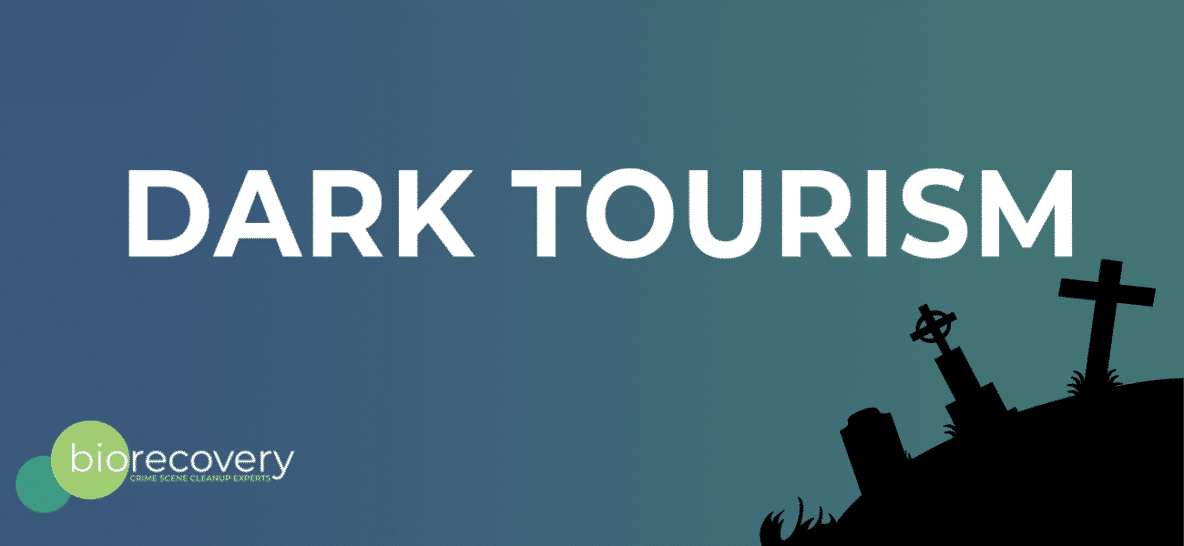We’ve all heard about tours of worldwide dark tourism destinations; Chernobyl, the killing fields of Cambodia, the catacombs of Paris, and the World War 2 battlegrounds and concentration camps all come to mind. But within the United States, many typically don’t think of these types of locations beyond the cemeteries of New Orleans and Ground Zero in New York.
However, some of the major dark tourism destinations within the United States don’t involve cemeteries or war stories at all, but instead focus around famous crime scenes.

“Dark tourism” (also known as “thanatourism” or “grief tourism”) is a growing area of tourism and travel, and not just among those who love to read old Anne Rice and Stephen King books. Academics believe ordinary people seek out monuments of humanity’s worst crimes against itself, possibly to experience the visceral gravity of horror, or to contemplate mortality.
Pop culturalists point to the increasing popularity of true crime podcasts and drama, and psychologists hint that there’s a catharsis to imagining a real-life horror story unfold… especially if there’s a good resolution at the end.
Here are just a few U.S. dark tourism hotspots. Or… cold spots, if you believe in that sort of thing.
Jeffrey Dahmer’s Childhood Home, Bath, Ohio
Jeffrey Dahmer’s Milwaukee apartment building is torn down and the bars where he stalked his victims are long gone, but his Cleveland area childhood home—where he dismembered and disposed of his first victim’s remains—is occasionally available as a “vacation” rental, clearly marketed to “dark tourists”.
The mid-century modern home is, as of 2018, owned by musician Chris Butler who, in addition to renting it out, has put it on the market at least once… but it’s a tough sell. (He, himself, didn’t know it was a “murder house” until he was in the purchasing process and the selling agent begrudgingly disclosed its notorious history).
The neighborhood experiences its share of gawkers, especially since the property was used as a set in the film My Friend Dahmer.
Tours of Notorious Death Sites in Los Angeles, California
In the greater Los Angeles area there is no shortage of options for those fascinated by celebrity deaths. A “Black Dahlia” tour company takes its customers to the second-to-last place Elizabeth Short was seen alive—The Biltmore lobby—as well as to the park near where her mutilated body was found by a passerby.
There are tours of the neighborhoods where Charlie Manson’s minions went on a murder spree 50 years ago; the LaBianca house still stands (and as of Summer, 2019 was listed for sale) but the Cielo Drive home where Sharon Tate, Wojciech Frykowski, Jay Sebring, Steven Parent, and Abigail Folger were brutally killed has been torn down and replaced. These are, of course, just “drive-by” tours, but people still pay for the experience. One company even sells parts of the original Cielo Drive house’s stone fireplace.
Then, of course, visitors can see the exteriors of O.J. Simpson’s former Brentwood home, the condo where Nicole Brown Simpson and Ron Goldman’s bodies were discovered. One guide drives his clients around in a Ford Bronco similar to that of the world’s most famous—and slowest—car chase.
There are many other notorious dark tourism spots in Los Angeles, including the Cecil Hotel. Here, serial killers Richard Ramirez and Jack Unterweger were reportedly guests, and where, in 2013, Elisa Lam’s decomposing body was found in the rooftop water tank… after guests complained of the hotel’s foul-tasting drinking water.
Villisca Ax Murder House, Villisca, Iowa

Now, the old white farmhouse has been restored and redecorated to best represent it as the peaceful family home it was before it became the scene of the grisly crime.
The current owners offer overnight stays and daily tours of the Villisca Ax Murder House, drawing ghosthunters, dark tourists, and brave souls who wonder, if the walls could talk, would they reveal the identity of the mysterious killer… or killers?
Ted Bundy Landmarks, Nationwide
Theodore Robert Bundy was a prolific serial killer in the 1970s, and recent films about his life and crimes have renewed interest in the places associated with him.
The Salt Lake City house where he rented a room has been inundated with crime tourists begging for tours or trespassing on the grounds, and Bundy enthusiasts (not exactly fans) have videotaped their own pilgrimages past Tallahassee’s Chi Omega sorority house where he amassed his highest murder count, and Florida State Prison where he was finally executed in 1989.
Dark tourism participants make side trips to the Garfield County Jail in Glenwood Springs, and the Pitkin County Courthouse in Aspen—both of which Bundy escaped from before he headed to Florida.
Bundy’s dinged-up Volkswagen Beetle, used in many of his Seattle-area abductions, has been passed around by various private collectors and museums over the years and is now on display in a Pigeon Forge, Tennessee crime museum—along with the white Bronco used in the O.J. chase mentioned above.
The Quest to Comprehend Tragedy and Death
As crime scene cleaning professionals, we often get calls from journalists who want to write features on the work we do every day. In many cases, the “hook” is the sensational nature of the death cleanup industry.
Sometimes, though, we meet journalists who understand the empathetic angle that we believe compels so many ordinary human beings to seek out the scenes of murders, genocides, and battles. When individuals or news writers genuinely want to know, on a compassionate level, about who we are and how we help our clients, we welcome them to contact us.

While there is no question that the subject of death shouldn’t be kept shrouded in mystery, those who are still living deserve dignity and the right to their privacy. Ask Kim Goldman, who in her recent podcast series condemned tour guides who profit off her brother and Nicole Simpson’s death, or the current residents of properties where murderers grew up and innocent people tragically died.
Bio Recovery’s own crime scene cleanup technicians deeply respect the deceased as human beings who had lives and loved ones. They’re not simply nameless victims.
We like to think that most dark tourism enthusiasts aren’t just rudely and shamelessly curious about famous crime scenes. They appreciate and acknowledge those whose lives were destroyed, and the survivors and communities deeply affected by the tragedies.
